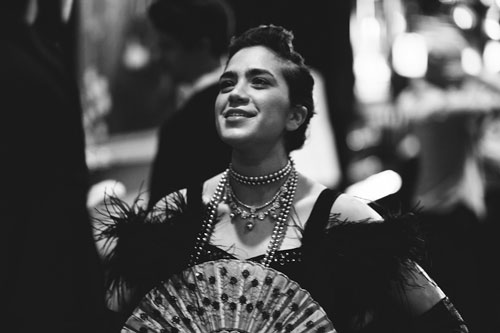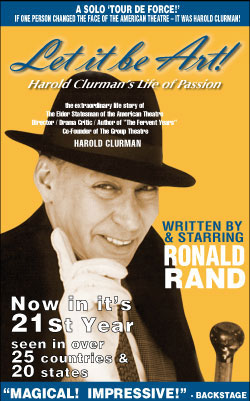“Grand Ball in the Belle Epoch”
– Edwardian Period Style Salon
A “Grand Ball in the Belle Epoch” is a Site Specific Period Style Performance – a direct extension of the extraordinary body of work created by my mentor and master teacher, Loyd Williamson, and was first inspired by his mentor, Anna Sokolow.
“The actors would begin to create the era in their own imagination and then place themselves in it. They might give themselves a name, age, and any other characteristics that emerged from their imaginations. The next step would be to set the actors into motion having them live out some simple fantasy event in that world with the other actors in the room. The purpose is to let the character’s physical behavior develop out of the people and surroundings that they were experiencing in this imaginary world This approach, I feel is one of the most important contributions that Anna Sokolow has given to the discipline of Movement for Actors” ~ Loyd Williamson.
After co-teaching Period Style at Actors Movement Studio for many years, and performing in several Period Salons with Loyd Williamson's expertise and love, as he would guide us into the world of the playwrights of the Elizabethan, Restoration/ Baroque and Late Victorian/Edwardian eras, I began my journey into teaching ‘Williamson Period Style Salons.’
Because of my undergraduate background in Painting and Art History, I felt that I had come home to a place where these two art forms could merge in the “physical dramaturgy” of Period Style.

My dream for this extraordinary legacy and body of work was to find a historic site-specific home for the Period Style Salon. Two years ago, I became a member of The Players, a club formed by Edwin Booth and housed in his extraordinary 1880’s mansion on Gramercy Park in New York City.
My first site specific Salon at The Players was ‘A Grand Ball in the Belle Epoch” – an Edwardian period style event with Atlantic Theater Company’s BFA students of the Tisch School of the Arts.

A collection of historic characters Waltzed and Grand Marched through The Players ballroom performing a procession of court bows with agrand promenade of Royal and Imperialintroductions. The characters in the Period Style Salon ranged from Royal and Imperial Majesties to the artist class, with historic legacies ranging from Nicholas Romanov to Oscar Wilde.
The audience members were able to partake in delightful moments of first-hand interaction with the characters as they entered from the second floor down an elegant Edwardian staircase to the ballroom from the Great Hall of The Players mansion.

The Etude is an improvisational, reenactment with a clear structure like a ballroom Dance Card with a succession of events, and occasional interaction directly with the audience.
At times the characters, in a formal tableau ‘portrait,’ would break the “fourth wall”, to directly address members of an invited audience who would peer into the world to witness, the characters talk about their lives, joys, sorrows, scandals, and hopeful dreams.
An Audience might encounter Sarah Bernhardt’s portrait-tableaux with other Grand Ball artists such as Oscar Wilde, Lilly Langtry, Henry Irving and or Ellen Terry, stepping toward the audience,breaking the “fourth wall,” with a flourishing fan gesture and full court bow, to address the audience with this opening quote:
“Mark Twain once wrote, “there are five kinds of actresses, bad ones, fair ones, good ones, great ones, and then there is Sarah Bernhardt.”
The photographs in this essay are from an Edwardian Period Style Salon with thirty-two actors from Tom Todoroff’s Conservatory.
When creating a Salon the young actors transform into a collection of historic personages as; the celebrated Edwardian Actor Edwin Booth and his portrait painter John Singer Sargent, escorted by Lilly Langtry, Lady Brooke, Ellen Terry and Henry Irving – all of whom Sargent had painted a portrait of.

“A rumor recorded in my diary,” Ellen Terry noted, “Henry Irving upon seeing his unflattering Sergeant portrait destroyed it.”
We witness a number of scandalous and historic romances of the Edwardian Era. Characters who hobnobbed in social circles as the "Marlborough Set" including the tragic love story of Nicholas Romanov and Alex of Hesse, Lady Randolph Churchill and Count Kinsky, Oscar Wilde and Lord Alfred Douglas, the unhappy Consuelo Vanderbilt and her consoling admirer Winston Churchill, The Prince of Wales and his Entourage of Mistresses ranging from aristocracy to artistry.
My gratitude goes to my mentor, Loyd Williamson, who gave me and other young teachers the tools and inspiration to teach this extraordinary body of work and to grow as a theater artist with his guidance.
“The Salon Project is a method for training actors in styles of movement in various eras of history. The guiding concept is that an actor learns the style of an era by living in the era that produced the style. The Salon Project is an opportunity for the actors to create for themselves a living experience of the epoch that they are studying. It is a resource exercise that is constructed out of what the actors themselves bring to the class. With extensive research in the liberal arts of the era: history, biography, political diplomacy, literature, religion, theater, art, music, dance, architecture, the art of fashion.” ~ Loyd Williamson

For info: Janice Orlandi, Artistic Director, Actors Movement Conservatory NYC,ams@actorsmovementstudio.com,actorschekhovstudio@gmail.com, 917-601-2783,www.actorsmovementstudio.com

























